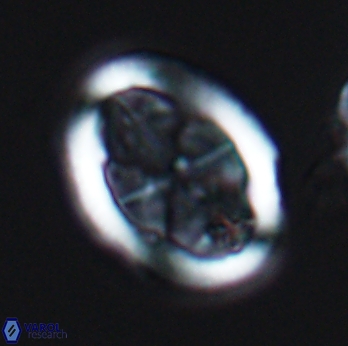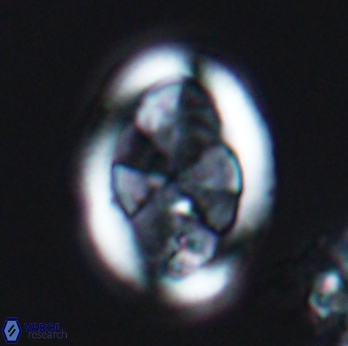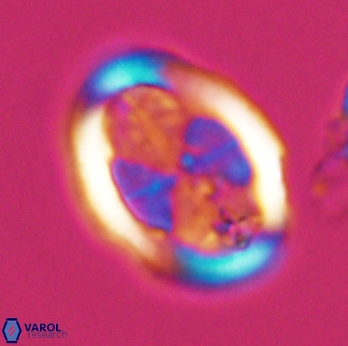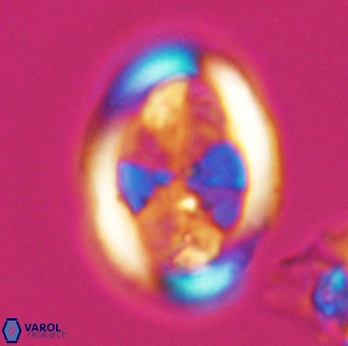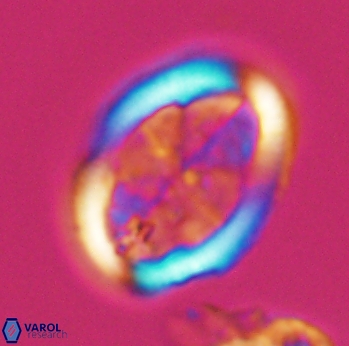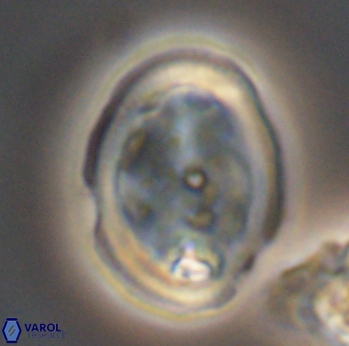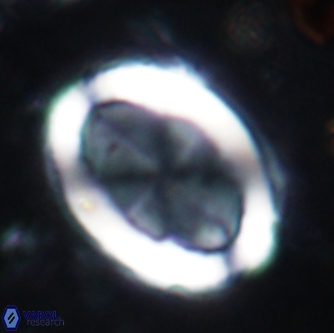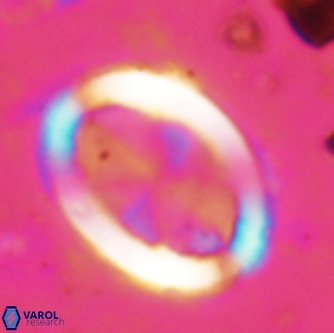Arkhangelskiella umbracrucis
Set number: 192
-
1
-
2
-
3
-
4
-
5
-
6
-
7
-
8
10µm
Set number: 193
-
1
-
2
-
3
-
4
10µm
Set number: 194
-
1
-
2
-
3
-
4
10µm
Set number: 196
-
1
-
2
-
3
-
4
10µm
Arkhangelskiella umbracrucis Varol, in prep.
Large [>11.0µm] species of Arkhangelskiella having a pelaga between 1.50µm and 2.00µm in width. The central area appears as a large, perforated axial cross due to the four “tooth” like projections at the inner margin of the pelaga.
After Latin, umbra crucis = the shadow of the cross, referring to its large cross-like appearance of the central plate.
Length: 11.5µm; Widt: 7.0µm
This large Arkhangelskiella species has eight to twelve pores in each quadrant of the central plate in well-preserved specimens. Its length ranges between 10.0µm and 12.0µm, and the width of the pelaga ranges between 1.5µm and 2.0µm. This species' most important characteristics are the four "tooth" like projections at the inner margin of the pelaga located about halfway between the axial sutures. Because of these "tooth" like projections, the central plate appears as a large, perforated axial cross. The central plate is relatively darker due to the presence of many pores. The axial suture is not distinct under bright field and phase contrast.
Arkhangelskiella umbracrucis is distinguished from Arkhangelskiella soyhaniorum by being more than 11.0µm in length, having pelaga between 1.50µm and 2.00µm in width and having less number of pores [8-12 pores per quadrant] in the central plate. The latter is less than 11.0µm, its pelaga is narrower than 1.50µm, and it has a greater number of fine pores in each quadrant [>20 pores].
